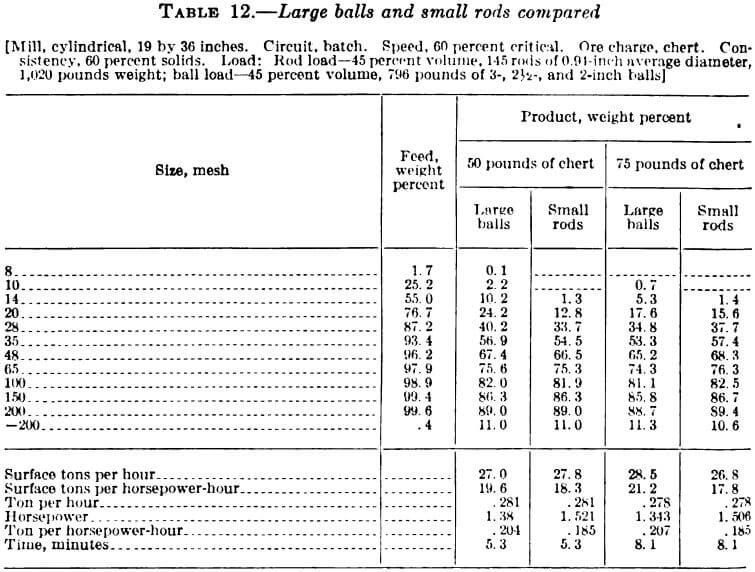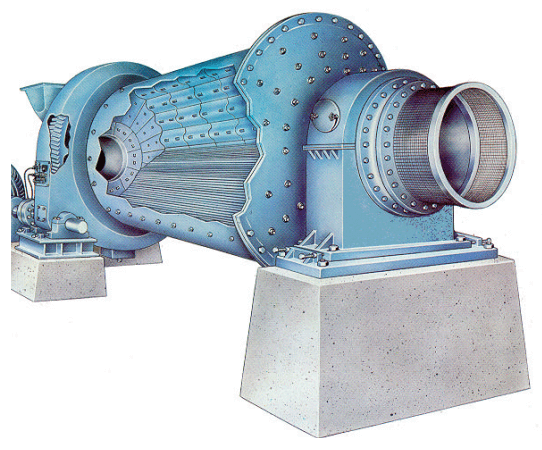 |
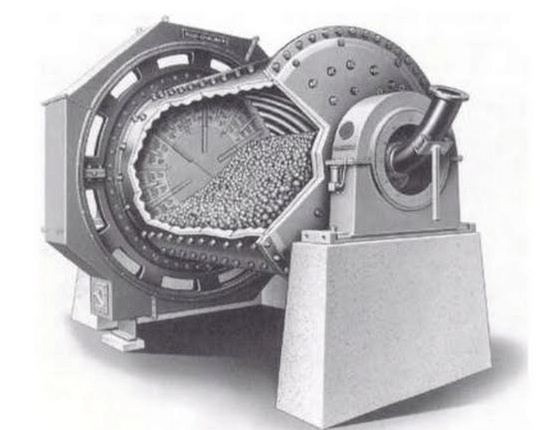 |
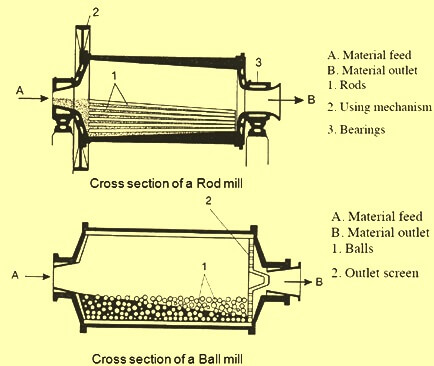


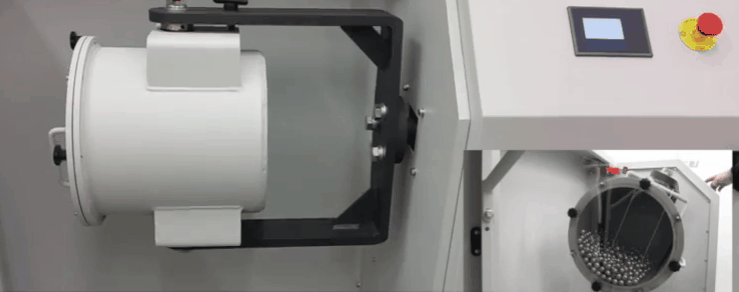
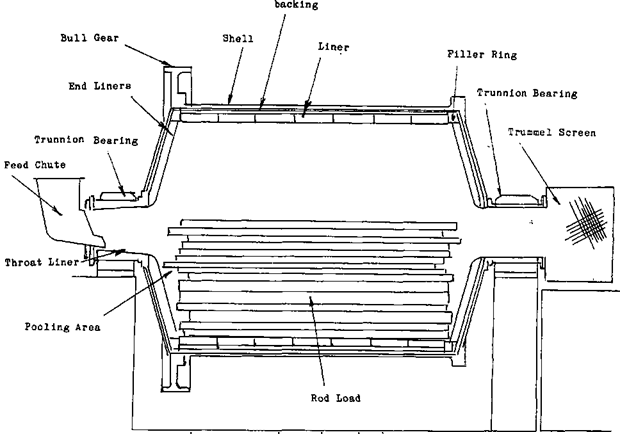
When the mill is rotated without feed or with very fine feed, the rods are in parallel alignment and in contact with one another for their full length. New feed entering at one end of the mill causes the rod charge to spread at that end. This produces a series of wedge shaped slots tapering toward the discharge end.
The tumbling and rolling rods expend most of their crushing force on the coarse fractions of the feed material and only to a lesser degree on the finer material filling the interstices in the rod charge. The horizontal progression of material through the mill is not rapid compared to the movement of the rods and material resulting from rotation of the mill. The average particle is subjected to an action similar to many sets of rolls in series, before it is discharged. Because of this, the rod mill can effectively reduce 1″ feed size to 10 mesh or finer in open circuit.
The voids (or interstitial space) within a rod load are approximately half those in a ball mill grinding load. Rods in place weigh approximately 400 pounds per cu. ft. and balls in place approximately 300 pounds per cu. ft.. Thus, quantitatively, less material can progress through the voids in the rod mill grinding media than in the ball mill, and the path of the material is more confined. This grinding action restricts the volume of feed which passes through the mill, without causing an overload condition.
The conical or convex head of our Rod Mill forms a receiving pocket at the feed end which facilitates entrance of the feed to the grinding charge uniformly. This permits maximum grinding efficiency at the maximum rate possible before an overload occurs. In addition, this type of head construction permits the use of rods the full mill shell length, and reduces wear on the end liners.
The discharge end pocket receives and readily discharges broken rod pieces which otherwise may remain in the rod charge and reduce grinding effectiveness. Vertical feed or discharge end liners may be substituted for the conical liners, when and if desired.
 |
 |
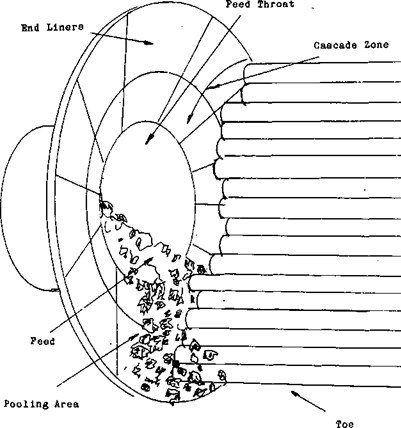 |
 |
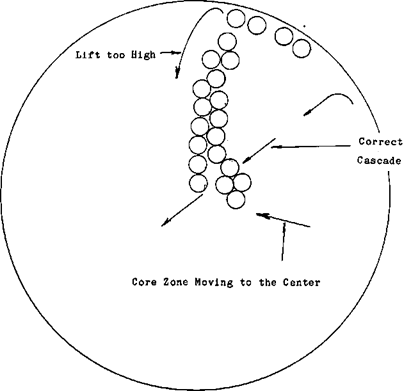 |
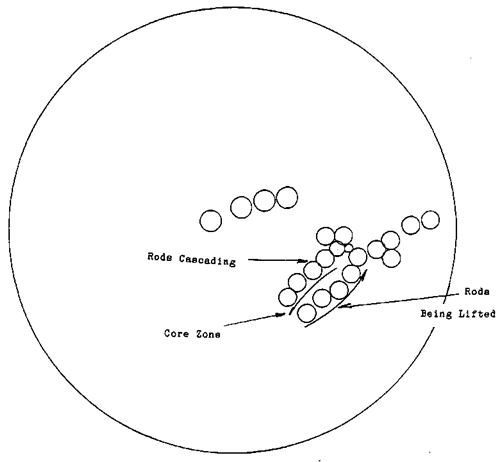 |
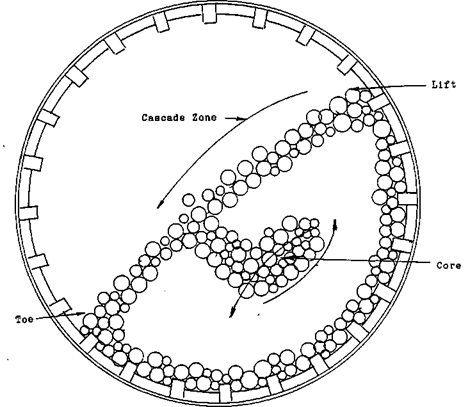
Selective and Non-Selective Grinding
The old and common terms “impact” and “attrition” are not satisfactory for designating types of grind. The reason will be obvious when it is seen that high speed and low speed gave about the same type of grind. Furthermore, the term attrition is not as specific as it was formerly regarded when it was used to signify the undesirable work of excessively small media. The reason why it is not specific is shown in this report; in batch tests, when the amounts of subsieve material were the same, the excessively big media left too many coarse particles of ore and in that respect failed as would excessively small balls. Surely attrition does not apply to the failure of the large balls; hence, attrition does not suit. “Nonselective” is a better term because it covers both extremes of poor work, and “selective” is descriptive of good work on the coarse material.
The term “overgrinding” is much used in conversation with mill men, but search of the literature indicates that a good definition does not exist. This is due probably to the absence of a satisfactory antonym. Selective and non-selective grinding are used here to compare products that have the same amount of the subsieve size. Then the product with the least amount of coarse sizes shows good selective grinding and the others are ground nonselectively. Stage grinding which is by repeated passes followed by removal of the finished material, is the best means of obtaining selective grinding. These terms must not be confused with differential grinding, which has to do with the relative grinding rates of two or more minerals in an ore.
Rod Mills = Selective Grinding
Ball Mills = Non-Selective Grinding
Large Balls & Small Rods Compared
Is it better to use a grinding mill with large balls or will small rods? How do you decide between using a ball mill or a rod mill? Many investigators have attributed the selective grinding of rods to line contact. Other things should be considered. In the two pairs of tests shown in table 12 the relative deportment of large balls and small rods in batch wet grinding is shown. The two loads had the same volume. The rods required about 12 percent more power and their better selective grinding is obvious.
In considering the selective grinding of the rods, it must be remembered that the rods were heavier than the heaviest balls; they weighed 7 pounds each, whereas the largest balls weighed only 5 pounds each. On the basis of weight, the rods were larger than the balls although their diameters were much smaller. The rods, being only 35 inches long, may be regarded as much more rigid than rods regularly used.
These observations should be compared with table 4, which shows that the heavier stuffed pipes did more selective grinding than the light pipes. There the diameters were the same, and unquestionably selective grinding was due to the greater weight. Hence, weight as well as diameter of the medium has to be considered in appraising selective grinding and ball milling generally.
When we theorize about angle of nip of media of different diameters we will have to take density and weight into account.
